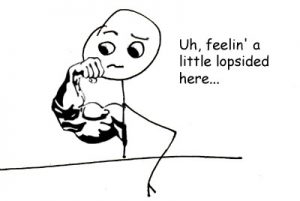
I often remind my six- and nine-year-old children that communication is not just what you say, but how you say it (frequently after one of them asks the other, “Will you please stop?” in a bloody-murder scream). The same is true in writing, both academic and nonacademic, with many subtle ways we can add to our meaning by emphasizing words, expressions, and phrases. In this post, I will write about some of the most common ones and offer suggestions for how to use them most effectively.
Text Styles
For emphasis, writers can vary the look of their text in a number of ways with bold, italics, underlining, and all-caps. Although some writers seem to like using all-caps, their use SHOULD BE AVOIDED ALTOGETHER. See? That’s just screaming, and screaming is unprofessional.
Get a free sample proofread and edit for your document.
Two professional proofreaders will proofread and edit your document.
 In nonacademic writing, underlining, bold, and italics may be used to emphasize certain words or expressions, though writers must keep their use to a minimum. In academic writing, it is best to avoid their use nearly entirely. One exception is putting foreign words in italics when they are introduced to show the spelling is correct, such as harajuku. Such words appear in normal text in subsequent references.
In nonacademic writing, underlining, bold, and italics may be used to emphasize certain words or expressions, though writers must keep their use to a minimum. In academic writing, it is best to avoid their use nearly entirely. One exception is putting foreign words in italics when they are introduced to show the spelling is correct, such as harajuku. Such words appear in normal text in subsequent references.
Please note that bold, italics, underlining, and all-caps may be used in titles and headings because that use is for formatting, not emphasis. (Note the bold headings in this blog post that simply indicate separate sections.)
Always check your style guide to make sure you are following the proper format because each guide has specific formatting rules.
The Exclamation Point
Rule number one about the exclamation point is to use only one at a time. Adding two, three, or more of these little guys has a “screamy,” unprofessional effect like all-caps does. (I think you know what I mean!!!)
Rule number two is to avoid exclamation points entirely in academic writing and use them very sparingly in nonacademic writing. People often try to use exclamation points to show they are excited about their content, but after a couple uses the effect is lost and the punctuation just clutters up the writing.
Maybe it’s just me [Editor here: No, it’s not just you.], but I feel like they make an author sound like a child, which is certainly not the desired effect in your college essays or professional correspondence.
Quotation Marks
Quotation marks can indicate different types of emphasis. An author may want to be sarcastic or flip, as in: That’s so “interesting.” These are called “scare quotes” and are the print version of putting up your fingers and making “air quotes.” This can be useful, but only in nonacademic writing, where papers are never supposed to be sarcastic.
Close to this usage, though without the sarcasm, an author may put quotation marks around a word or expression with a figurative meaning to make sure the reader doesn’t take the words literally.
Again, these types of emphasis should be used as little as possible so they keep their effect. Also, make sure you are using quotation marks for only one of these types of emphasis, or your writing can get a bit “confusing.”
The Em Dash and Colon
The em dash (a dash the length of three hyphens) can be used to draw attention to a word, phrase, or entire clause—to great effect. See, it works! (Wait, was that exclamation point necessary?) An em dash can be used in the middle of a sentence—like this— or at the end as in the previous example. A colon can be used similarly, but only at the end of the sentence. Both em dashes and colons are useful in formal and informal writing, but, again, a little goes a long way.
The dash in particular gets overused. Some authors just stick one in when unsure whether to use a semi-colon, colon, or comma. This fools no one. Here at ProofreadingPal, we get to correct these all the time. A dash is for emphasis, not generic punctuation.
Depending on the purpose of your writing, using these strategies to provide emphasis can be highly effective and fun—if I do say so myself! Just remember to use the strategies in moderation, especially if you are writing for an academic or otherwise formal purpose. Too much of a good thing can lose the desired effect and even have negative effects you hadn’t considered.
Sarah P.
Get a free sample proofread and edit for your document.
Two professional proofreaders will proofread and edit your document.
Get a free sample proofread and edit for your document.
Two professional proofreaders will proofread and edit your document.
We will get your free sample back in three to six hours!